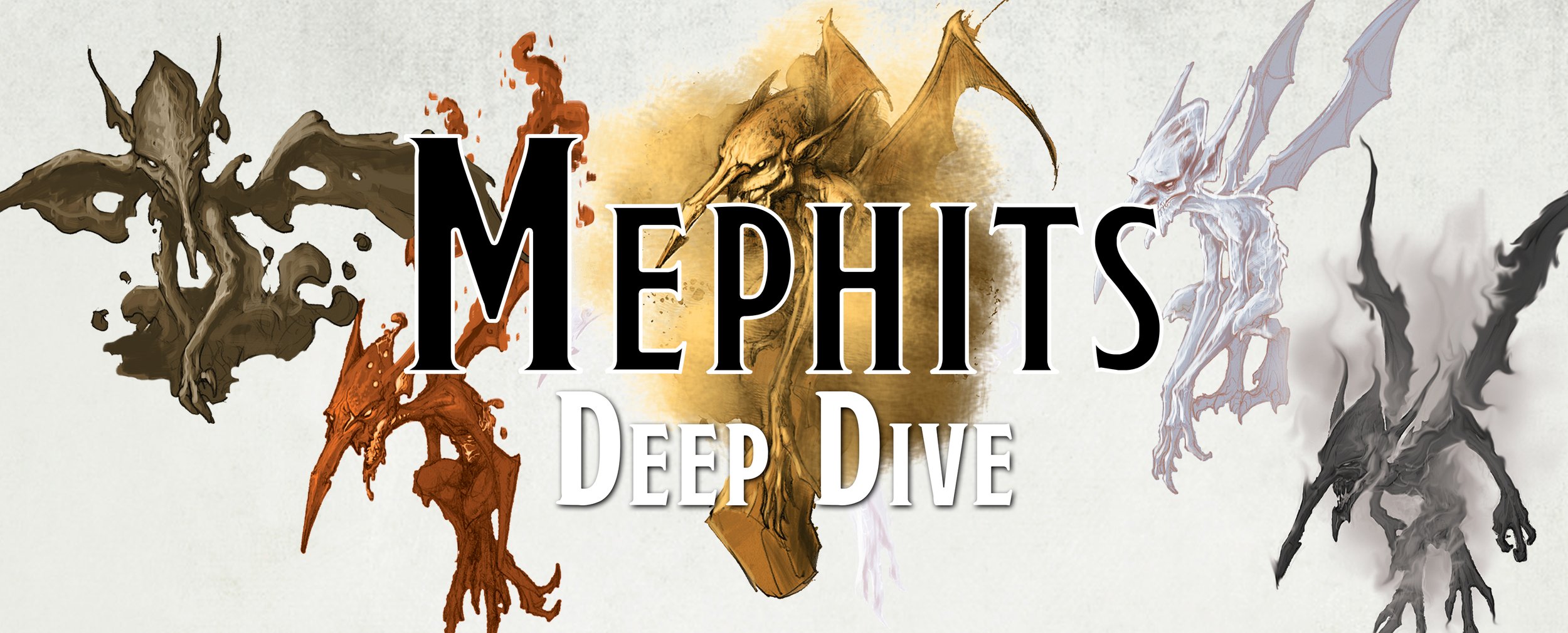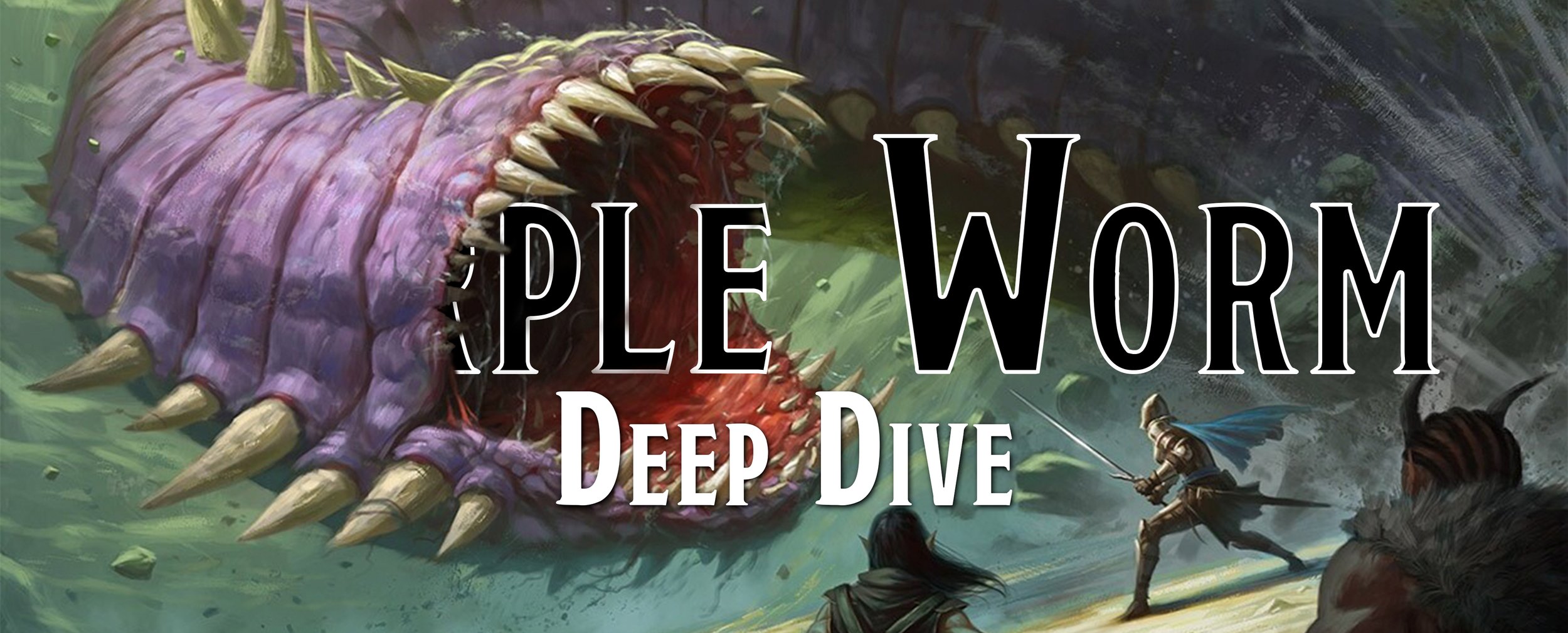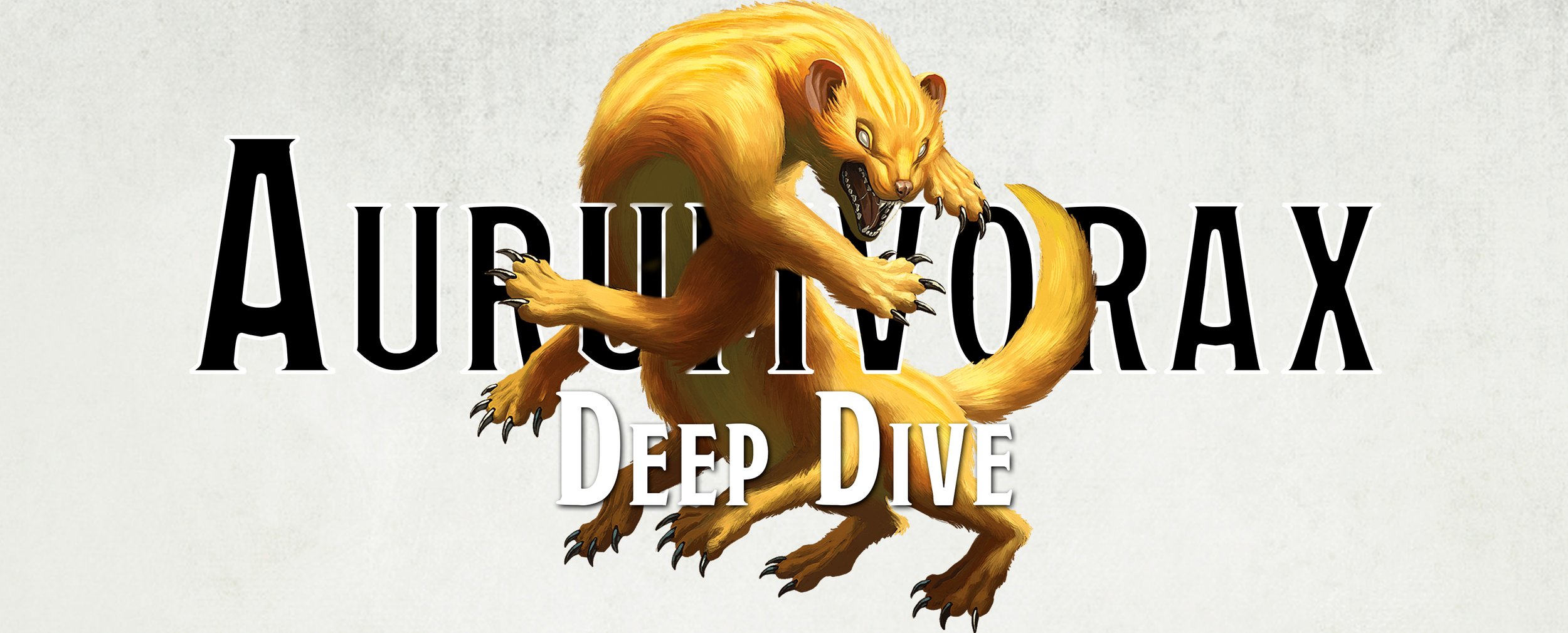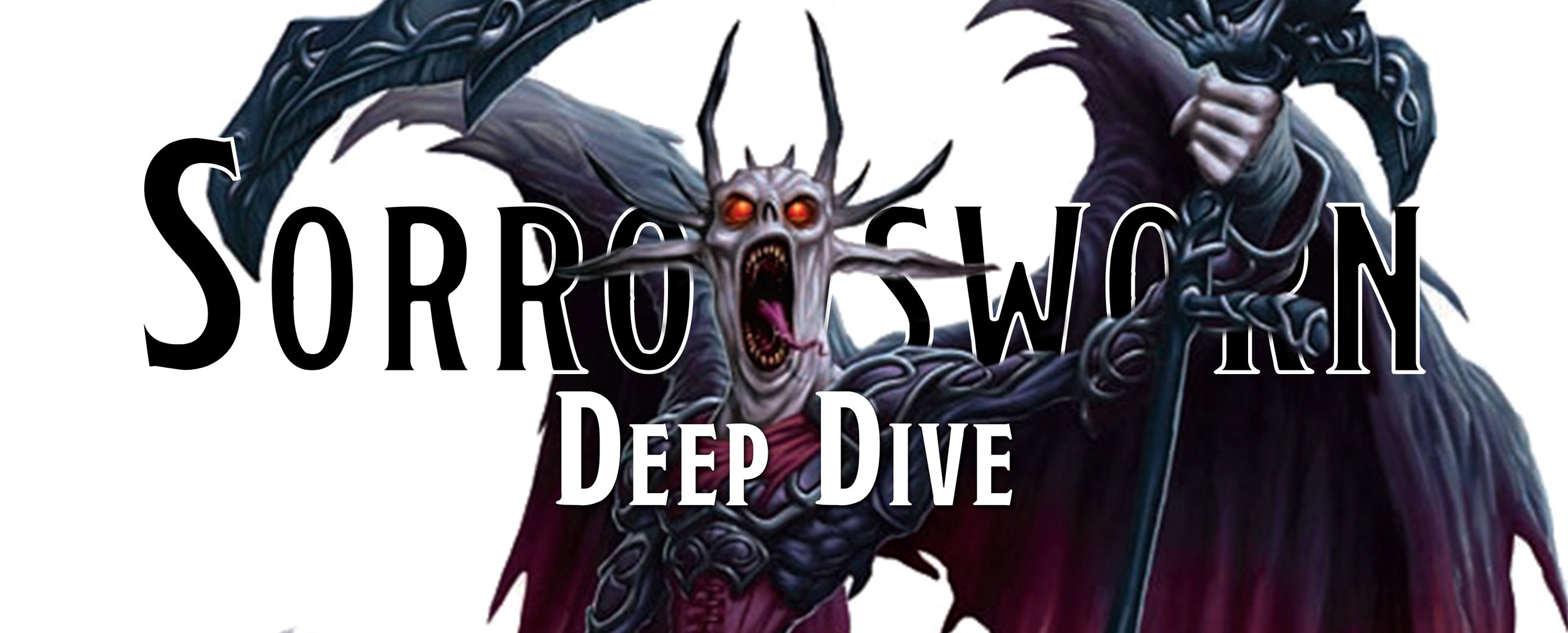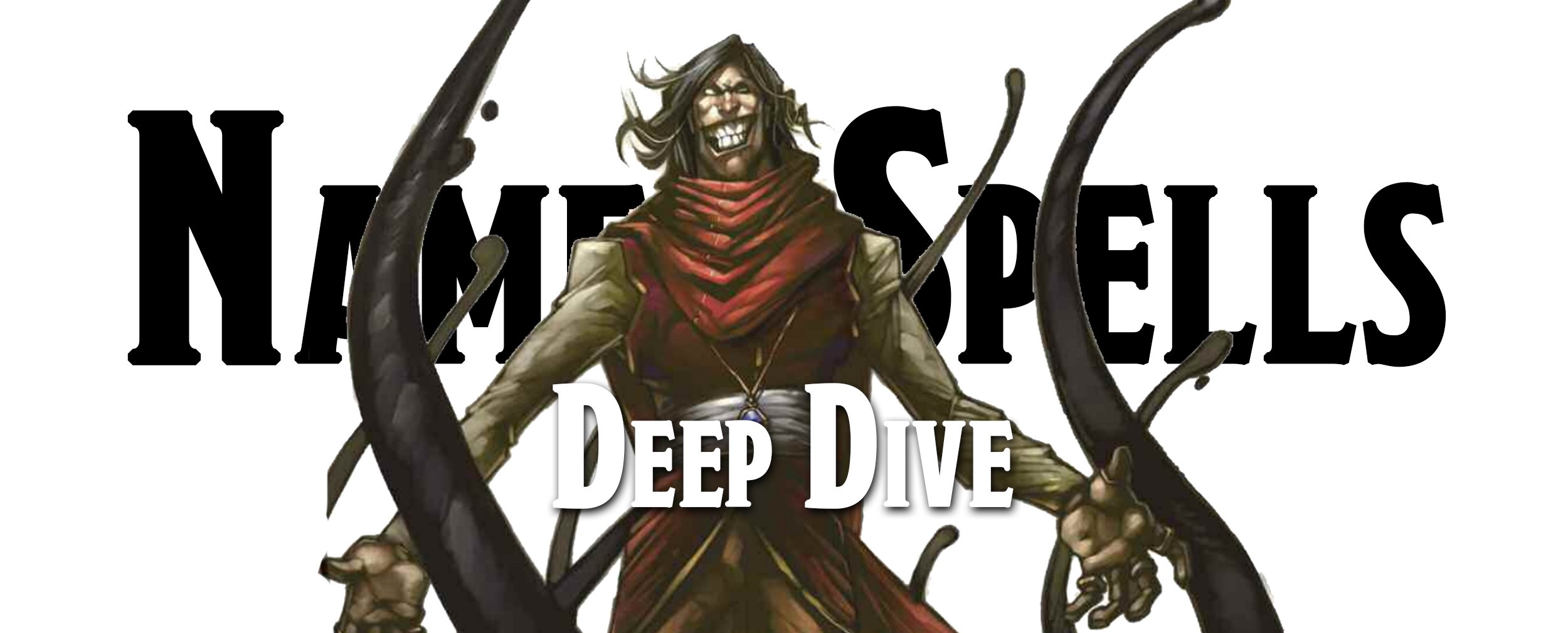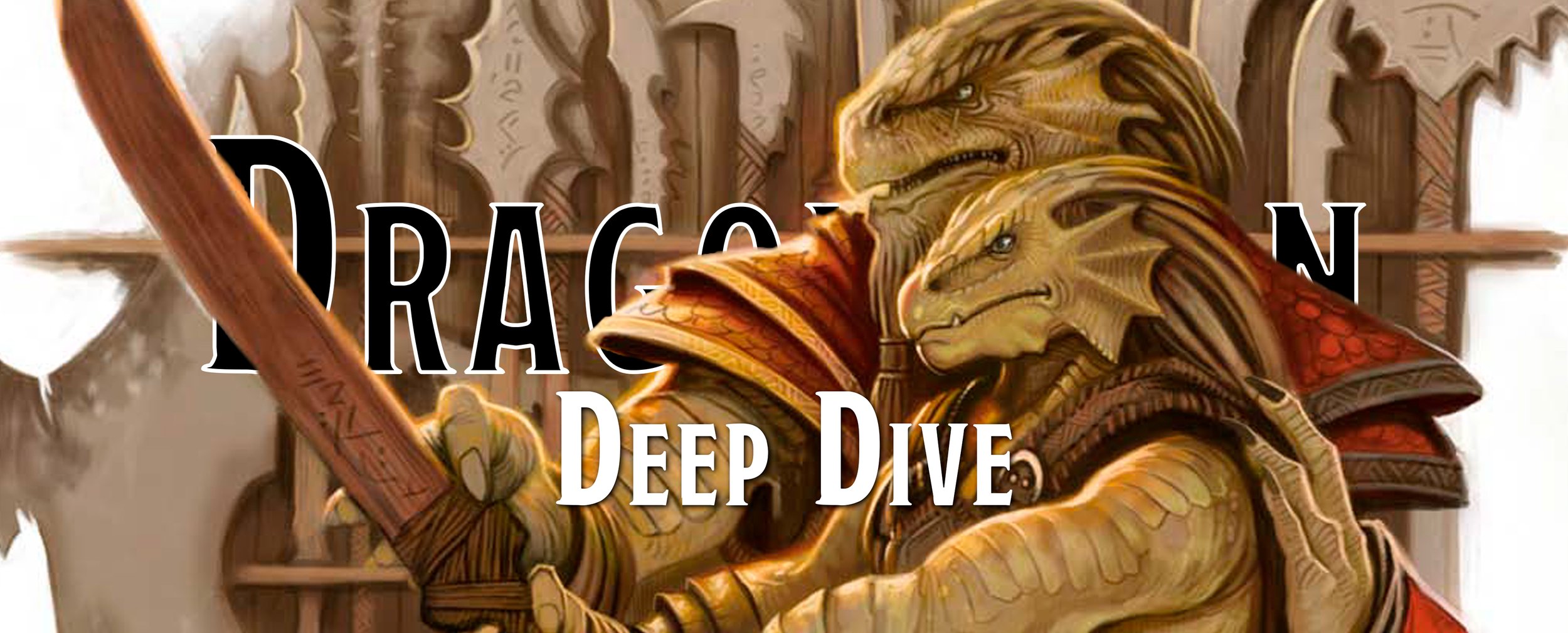Deep Dive - Warlock Class
The first incarnation of the Warlock appears merely as a level in the wizard class in the original Dungeons & Dragons and then as a lowly non-player character in Dragon #114 (October 1986) as a witch. The witch can be found as far back as Dragon #5 (March 1977) and we are told that they are strictly female. In the usual sexist 1970’s fashion, we are told again in Dragon #20 (November 1978) that they would make an excellent character for the ladies, whether it’s your sister, girlfriend, or wife as witches are strictly female. It’s just one more reason to appreciate the world we now live in. In addition, we are informed that some witches will mix in with a group of Warlocks and wizards. Now, we all know what a friendly neighborhood wizard looks like, but the Warlock? We’ve got to wait nearly ten years to find out.
Dragon #114, October 1986 TSR Inc.
The Warlock is an individual who has, in our opinion, made poor life choices. They have made pacts with entities that stand far outside the mortal mind, granting the Warlock with wonderful power that never seems to run out. For those looking to avoid the hard work of being a wizard or who are not naturally gifted like a sorcerer, making a deal for unlimited power seems like a great way of accessing the power of arcane magic.
2e - Witch/Warlock
Key Features
• Hit Points: 1d4
• Key Ability: Intelligence
• Wizard Kit
• Make deals with powerful extraplanar beings
• Spell points instead of spell slots
The first incarnation of the Warlock is actually what male Witches are known as in The Complete Wizard’s Handbook (1990). The Witch is a wizard kit, a type of subclass for the wizard to give them new skills, abilities, and proficiencies instead of just being a boring wizard. The Witch is all about making deals with powerful entities, who may not even be on the same dimension, and living their lives with no regrets. These entities may be gods, the minions of gods, or even other powerful Witches willing to train others. These deals often benefit the entities who grant the knowledge of magic, though some especially clever Witches might get the upper hand on very rare occasions. To become a Witch, a wizard must have at least a 13 in Constitution, Wisdom, and Intelligence, which is a difficult requirement for many, especially when you roll 3d6 for ability scores.
In exchange for making a one-sided contract that will probably have unforeseen repercussions for your eternal soul, the Witch gets quite a few goodies that make them one of the strongest kits that a wizard could pick. One of the first abilities a Witch gets is that they can summon a familiar, like if they cast a find familiar spell and it doesn’t even cost them the astronomical price of 1,000 gp to do so. They just summon a creature within a mile of them, and that creature arrives in 1d10 hours. We suppose the familiar needs to finish up any last-minute business in the forest and kiss their kids goodbye as they go off on an adventure. If summoning friendly animals doesn’t do it for you, a Witch can also create some potent brews to bring down their enemies. At 5th level, they can create a brew calmative that is a bottled sleep spell that can be drunk, applied to weapons, or splashed into a creature’s face. When the Witch gets stronger, they get more of these brews, like creating poisons or an ointment that grants them the ability to fly.
Then again, maybe all that potion work is just too time-consuming, and you just want to curse some people. At 13th level, a Witch can just point at a creature they despise, inflicting a curse upon them with no saving throw to resists its effects. This curse has a few random effects, like placing a penalty on an opponent’s attack and damage rolls, turning the target blind, or sending them into a temporal stasis for 24 hours. Of course, all this power comes at a cost. No one trusts a Witch because no one knows what deals they might have made to gain their power. Whenever a Witch enters a settlement with superstitious citizens, which is probably every settlement if we know are GMs, there is a 20% cumulative chance per day that the settlement will gather a bunch of villagers to come and try to run you out of town or maybe even throw a bonfire in your honor.
Player’s Option: Spells & Magic, 1996 TSR Inc.
As the edition continues, the Warlock and Witch are no longer a wizard kit, but rather a new way that the wizard could be played as in the Player’s Option: Spells & Magic (1996) sourcebook, and this variant class shows off the new spell point system presented in the book. Wizards who walk the path of this Warlock get great opportunities for flexibility as they are no longer bound to preparing specific spells into discrete spell slots but rather have a host of spells that they know and spell points to power all of them. They get the opportunity to better respond to new threats and surprises, and they stop being a prepared caster who must choose how many fireball spells they are preparing that day and instead become a spontaneous caster who can decide that they are using all of their spell points to cast as many fireballs as possible. Such silly things as spell slots no longer bind the Warlock, but their pool of spell points can be used to cast any spell that they know, with each level of spell costing different amounts of points. A 1st-level spell is worth 4 spell points while a 9th-level spell is worth 60 points; a typical 20th level Warlock will have 800 points at their disposal.
Of course, with all this power coursing through your veins, a Warlock has to have some drawbacks, right? We’ll start with the basics; when this variant-wizard class is selected, people are going to be downright mistrusting of you and those you associate with. This is mostly because it is almost impossible to know who you have pledged yourself to and their motivations. You might be a servant of darkness as most who seek power in this way are going the path of evil and darkness for quick access to power instead of working for it. While there are good Warlocks, you aren’t ever going to find one. We guess because people like to be negative instead of positive.
If you don’t care about crushing a few villagers with your magical power, well, then you can ignore the fact people won’t like you. Another drawback to keep in mind with Warlock powers is that your pool of spell points doesn’t come back to you like a wizard’s spell slots. Unlike other casters, a Warlock can’t take a nap and regain their power. Instead, once they use their spell points, they are gone until they can spend 8 hours per level performing a special ceremony where they summon forth their extraplanar sponsor. They then must spend that time, which could take days, to regain their spell points. After your Warlock finishes that time, they gain back all their spell points and are ready to go out and spend all of their points on fireball spells.
If that wasn’t bad enough, the Warlock has another big drawback. Warlocks can not cast more than nine spells of the same level each day, so once you cast your ninth fireball for the day then you are out of luck for 3rd-level spells. If having that limit isn’t bad enough, every time you cast a spell you must roll a d100 as you risk drawing even more attention from your sponsor. There is a percentage chance equal to the number of points you expended minus your Warlock level that your sponsor will decide you need to do something for them, forcing you deeper into your pact with them. So let’s say you decide to cast fireball, expending the 10 spell points needed to fuel its power, and unleash it on your enemies. You now must roll a d100, and you are hoping to roll over 10% minus your Warlock level, so at most a 5% chance of getting dragged deeper into darkness.
As a Warlock gets dragged deeper into darkness, they pass through five stages until they become so unrepentantly evil that the DM takes over the character permanently. Each stage comes with advantages and disadvantages, and each one gets more powerful as the Warlock continues down them. A Warlock gets a small supernatural power at stage one, like horns that can be used in combat, eyes that can see in the dark, or a free 1st- or 2nd-level spell they can cast once per day. With that small boon in power, they must also take on a minor penalty like having horns on their head, glowing red eyes, and gain a marking of their patron on their skin. Every Warlock will have different boosts and banes as the DM is told to be creative and malevolent in equal measures but not punishing, so hopefully, your DM isn’t from the Gygax School of Dungeon Mastering. The Warlock should want these powers even though it comes with a downside that equals its power. Warlocks can fight against this and are allowed a single saving throw each time they move down the path, though it gets harder to resist each time as they take a penalty equal to the stage they will be at to the roll.
Once you’ve decided to embrace this dark power, you’ll find yourself gaining powers you could only dream of as you grow in strength and stature as you hit higher stages. Of course, all great power comes at a cost, so be prepared to once again deal with more than just the darkness in your soul. At stage two, a Warlock gets invulnerability and weakness. This invulnerability could take the form of additional hit points or a boost to their Constitution score. Likewise, a weakness might mean they are now vulnerable to attacks made with cold iron, or it costs them extra points to cast spells during the night or day. Stage three brings a great transformation where a physical mutation takes place that makes it almost impossible to hide that you are a Warlock. This could be great bat wings that grant a fly speed, goat hooves for greater speed, or thick leather skin that acts as natural armor, though regardless of what it is, you are marked for all the world to see. Stage four brings even greater strengths and weakness, like stage two, which then leads into stage five, where you become a non-playable character under the strict control of the DM who can use your character as they see fit, like as a boss to kill your new character or maybe as a provider of dark magical powers for your next Warlock. Regardless, you have fully descended into darkness and are no longer fit to be an adventurer. Maybe not the retirement you were hoping for your character, but then again, it could be worse. You could be a cleric and forced to build a church for your god or lose all your powers.
Player’s Option: Spells & Magic, 1996 TSR Inc.
3.5e - Warlock
Key Features
• Hit Points: 1d6
• Key Ability: Charisma
• Invocations instead of spells
• Charisma powers their invocations
• Born to the darkness and twisted by it
Complete Arcane, 2004 WotC
The Warlock becomes its own class in the Complete Arcane (2004) sourcebook and might be one of the edgiest classes ever to exist. Most Warlocks are chaotic and evil, working for cruel, capricious, and wild powers, bringing destruction to their enemies. A select few, though, might turn against the forces of evil, for they know best the darkness in their heart and how the forces of evil work. Warlocks are born, never made, and are the descendants of those who once trafficked with demons, devils, and other foul powers. We suppose if our ancestors forced us to have unnatural powers given to us by the forces of darkness, we’d be a bit angry too.
Before we get into what makes the Warlock truly special, let’s go over the basics of their class features. Starting Warlocks are proficient with simple weapons and light armor, so while they aren’t always going to be on the front lines, they at least have some armor to protect them with their d6 hit die. One of the more interesting abilities that a Warlock gets comes at 3rd level when they get damage reduction that is only bypassed by cold iron. Cold iron, in Dungeons & Dragons at least, is used to bypass the resistances of fey creatures, while devils and demons require silver to be used against them. It’s an interesting choice for a class whose flavor is all about how they are fiendish and cruel. If damage reduction wasn’t enough, the Warlock could also activate a rejuvenation ability to regain missing hit points every round. At 10th level, they also gain resistance to two energy types which include acid, cold, electricity, fire, and sonic. In effect, despite their low hit points, the Warlock is quite hardy and resilient when it comes to getting hit in the face.
Complete Arcane, 2004 WotC
Of course, the most exciting part about the Warlock is what happens at 1st level with the inclusion of eldritch blast and access to invocations. While not as iconic as the beloved fireball, it is the most famous of the Warlock powers and the one that makes you a force to be reckoned with at lower levels. Eldritch blast is the main way that a Warlock will fight monsters, by sending a ray of spooky energy at their targets. This attack has no damage type associated with it, which means it is just damage that bypasses most damage reductions, resistances, and the like, making it quite handy in a fight. Of course, just dealing a d6 of damage for every two levels in Warlock you have isn’t very exciting for an entire campaign, and so that brings us to invocations.
Complete Arcane, 2004 WotC
Invocations are why Warlocks don’t have spell slots and are what makes them unique to play. They are at-will powers that can be used to augment your eldritch blast or do other things like grant bonuses on Charisma checks, cast spells like darkness, or even become a swarm of batlike shadows. Invocations that manipulate your eldritch blast are known as essences, and they might cause a target to become frightened upon being struck by your blast, deal cold damage that reduces the target’s Dexterity score, or even spray your eldritch blast in a cone to hit multiple targets. Invocations lack the versatility of spells. You can have a certain number of them based on your level, with a 5th level Warlock only having access to three of them and a 20th level Warlock only getting twelve. These invocations are broken up into four categories, with the weakest invocations known as Least Invocations and the others, in increasing strength, are known as Lesser Invocations, Greater Invocations, and Dark Invocations.
Complete Mage, 2006 WotC
The Warlock sees a bit more excitement in this edition with the Complete Mage (2006); a book focused on spells, prestige classes, archetypes, feats, magic items, invocations, and more. While the book is more of a general sourcebook, adding new things for almost every arcane magic user, the Warlock does get a bit of action with three prestige classes and a host of new invocations. Prestige classes are special levels that a character could take that were typically only 5 to 10 levels built on a specific theme, granting unique and situational abilities for specific types of campaigns. The best prestige classes for the Warlock aren’t solely for them, as anyone who can meet the requirements could take them, but the Warlock is likely to accomplish many of the requirements without having to build specifically for it.
Complete Mage, 2006 WotC
The first is the Eldritch Disciple, which is focused on combining the powers of the divine, like a cleric’s spells, and adding in some of the spooky darkness of the Warlock. The Eldritch Theurge is similar, except it is the combination of the arcane spellcasters, like wizard or sorcerer, and mixing the powers of the Warlock so that you could cast an area of effect spell on your eldritch blast and have it explode on your target. The final prestige class is the Enlightened Spirit which makes your Warlock almost like a scion of celestial might with access to celestial wings, transform your eldritch blast into a holy blast to deal extra damage to evil outsiders, like devils and demons, and even make you immune to negative energy and death spells. This may seem a bit strange given how your powers are born from the darkness of demons and devils, but maybe you are growing as a person and trying to become just a bit less edgy.
4e - Warlock
Key Features
• Hit Points: 12 at 1st level, 5 hit points per additional level
• Key Ability: Charisma, Constitution, Intelligence
• Role: Striker
• Invocations are turned into AEDU powers/spells
• Must make a pact with mechanical ramifications
Player’s Handbook, 2008 WotC
The Warlock makes it to the big leagues and is now a core class, appearing in the Player’s Handbook (2008). Apparently, being super edgy isn’t such a bad thing since the barbarian and sorcerer won’t be called up until later books. The biggest change for all classes in this edition is that they are all given AEDU powers, which stands for At-Will, Encounter, Daily, and Utility powers. Each of these powers has different uses throughout the game, with At-Will generally the weakest power since you can use it as many times as you want, and the powers increase in potency with Encounter and Daily at the top. Utility powers are simpler abilities that rarely have a purpose inside of combat and are largely for problem-solving.
The first thing you must decide when you create a Warlock is what pact did you make to gain your power? The pact a Warlock has made becomes a more pronounced part of their identity, unlike previously, and each pact offers different abilities. The first available pacts are the Fey, Infernal, and Star pact, each reflecting a different way of creating a Warlock. Infernal focuses on damage, Fey focuses on movement and bewitching enemies with Star pact acting as a between with a more even focus between damage and debuffs. Each power that a Warlock gains access to can be a Fey, Infernal, or Star pact power though a few powers might increase in strength or have prerequisites based on the pact you choose. In addition, depending on what type of power it is, it will require a different ability score to use the ability with Infernal and some Star powers requiring Constitution, Fey and some Star powers requiring Charisma, and a handful of powers requiring a good Intelligence. This makes it so that Warlocks rely on three main abilities to be as powerful as possible, though you can avoid Charisma powers if you only want to blast creatures apart with your raw eldritch power or avoid Constitution powers if you just want to focus on being a powerful supporter.
Player’s Handbook, 2008 WotC
Eldritch blast also appears in this addition as a class feature and as a basic At-Will power that increases in strength as the Warlock gains levels. Unfortunately, there are no options for augmenting their eldritch blast. Instead, their powers will be focused on doing things other than casting the same basic spell. One of the biggest powers that a Warlock will constantly be using is their warlock’s curse, allowing them to deal additional damage to enemies they hit. If they reduce them to 0 hit points, it grants them special boons like temporary hit points, bonuses on their attack rolls, or debuffing nearby enemies.
Player’s Handbook, 2008 WotC
Once you reach the 11th level, you now get access to a Paragon Path, a type of subclass that grants you additional powers, but each has prerequisites that you must meet to access them. For the Warlock, there are only three options at first based on what pact you choose at character creation. You can become a Doomsayer for the Star pact and gain the power to stun creatures, shoot shards of psychic energy, and spew clouds of shadow. If you went Infernal pact, you would become a Life-Stealer and become capable of collecting the life sparks from the creatures you kill, which allows you to use them to heal yourself or deal extra damage to your enemies. For Fey pact Warlocks, they become Feytouched which grants them more teleportation magic and the ability to confuse your enemies so that they attack each other.
Arcane Power, 2009 WotC
The Warlock sees many more options in this edition, with the first coming in Arcane Power (2009), which provides a new pact, fifteen pages of new powers, and eight new paragon paths! The new pact is called the Vestige pact and allows you to create bonds with the remnants of powerful forces or entities that were so powerful that they can still be felt to this day. They aren’t gods, but they were such powerful beings that echoes of their power and personality can still be drawn on. This pact focuses on providing buffs to you or your allies, though some do additional damage to your enemies when activated. As for the paragon paths, they offer a large variety of different powers with some focused on healing, as the God Fragment, or on blasting your enemies apart, like the Hellbringer. There are also paths on debuffing your enemies, cursing them to take damage if they so much as end their turn near you, like the Hexer, or perhaps you are a gentler soul, and instead you grant yourself boons like the Master of the Starry Night who grants concealment to themselves and their allies. The others offer varying powers that focus on different elements like the sea with the Sea Tyrant Oracle, darkness with the Dark Reckoner, storms with the Storm Scourge, and your otherworldliness with the Entrancing Mystic path.
Arcane Power, 2009 WotC
Heroes of the Forgotten Kingdoms, 2010 WotC
The next big change for the Warlock is seen in the Heroes of the Forgotten Kingdoms (2010); an Essentials rulebook that featured an alternative form of the Warlock known as the Hexblade. The Hexblade remains largely a Warlock but exchanges a few of the core class features for ones that allow them to channel their eldritch might through their weapons. They are the mixture of an arcane spellcaster and a warrior, capable of cleaving through enemies and blasting out powerful spells. In exchange for giving up their warlock’s curse and other class features, the Hexblade gets a boon from their pact, as well as the ability to summon a pact weapon. This weapon takes on a specific appearance of your pact, like the Fey pact allows you to summon a rapier, while the Infernal pact is a heavy blade weapon that deals a bit more damage. There are additional powers available in this book for the Hexblade to augment their damage and unleash devastating attacks with the mixture of martial and arcane power.
Player’s Option: Heroes of Shadow, 2011 WotC
Like the Hexblade, the Binder is another alternate ruleset for the Warlock in the Player’s Option: Heroes of Shadow (2011) supplement. The Binder gives up much of its damage in exchange for greater battlefield control. You can force your enemies to move or take damage if they refuse to follow your commands, slow down other creatures, so your allies get hit less, and push monsters across the field of battle to create openings for your ally. In addition, this book also features the Gloom pact, a Binder-specific pact that draws on the power of shadow and the gloom of Shadowfell. Those who channel this power gain from the Dark Lords who are trapped in the Shadowfell and, thanks to being locked away, have no care how their power is used so long as it is. This might one day lead to them being free as their presence is felt further across the multiverse.
Additional pacts and powers for the original Warlock that appeared in the Player’s Handbook are shown off in Dark Sun Campaign Setting (2010) and in Player’s Option: Heroes of the Elemental Chaos (2012). Dark Sun features the Sorcerer-King pact, which is a deal between the Sorcerer-King Athas and the Warlock, granting you the ability to channel the arcane might of the Sorcerer-King and crush your foes beneath your power. The Elemental pact, in Heroes of the Elemental Chaos, grants you some of the chaotic energies of the Elemental Chaos and channel it through your power. You can change the damage types of attacks to whatever element you are currently in tune with, which is determined randomly at the start of the day and includes acid, cold, fire, lightning, and thunder. You can cause creatures to become vulnerable to damage that you create, imposing painful consequences on any who might stand before you. Hexblades are also given the option to take this pact, granting them the ability to summon a weapon from the Wind Dukes of Aqaa, a blade of chaos that is a heavy blade with a serrated edge. It’s hard to imagine an edgier Warlock than someone that wields a serrated sword; though maybe if they wielded a pizza cutter.
Player’s Option: Heroes of the Elemental Chaos, 2012 WotC
5e - Warlock
Key Features
• Hit Points: 1d8
• Key Ability: Charisma
• Has access to invocations and magic
• Must choose a pact and a patron
Player’s Handbook, 2014 WotC
The Warlock remains a core class, appearing in the Player’s Handbook (2014) with three types of pacts to take and three patrons to choose from. In this edition, a Warlock needs a patron to help grant them their power. They then create a pact with that patron at higher levels, granting them additional magic, a familiar, or a powerful weapon. Invocations return in this edition though it isn’t the only option for power as Warlocks get access to spells to increase their power. While the Warlocks get fewer invocations than they did in 3e, their pact magic helps to cover up the loss. This magic is quite different as they only have up to four spell slots at their highest levels, though it is more common only to have two at a time. Luckily for the Warlock, they can regain these expended spell slots by quickly napping, but it means that they will rely on simpler attacks like using weapons or spamming their cantrips by casting eldritch blast or chill touch.
Speaking of eldritch blast, it is no longer a given that a Warlock will have the power of this spooky blast and it becomes codified as a spell that is only available to Warlocks. Why it was changed to be a spell instead of just a core class feature is beyond us, especially because some of the invocations that a Warlock can gain actually morph and augment their eldritch blast and no other cantrip or spell that they can get, which is rather baffling. Invocations themselves take many forms, like augmenting eldritch blast, casting certain spells at will, or even allow you to see through magical darkness. At least the spell is a cantrip, allowing you to spam it over and over again without having to worry about those pesky spell slots.
The patrons first available to a young Warlock are the classic Archfey, Fiend, and a new one, the Great Old One. Archfey are those same rascals who are all about movement, beguiling their enemies, and grant spells that are focused around debuffing and buffing your allies. Fiend patrons are a little different this go around. While many spells they offer are focused on dealing damage, many of the class features they offer are focused on buffing yourself and ensuring that you survive. The Great Old One is a new patron and includes the epic entities that exist in the Far Realm, the space beyond reality and understanding. Great Old One patrons offer spells that blast into an opponent’s mind, causing them to descend into madness and confusion. In addition, the class features they grant you have to do with getting in your opponent’s mind, literally, as you can telepathically communicate with other creatures, inflict psychic damage that they try to turn on you, and even turn them into your thrall.
Pacts in this edition are important elements of a Warlock, though they aren’t the core identity that they were previously. Three pacts are offered; Chain, Blade, and Tome, with each offering different power with no restrictions based on what patron you made. Pact of the Chain grants you a powerful familiar that is bound to serve you and capable of attacking your enemies while you watch. Pact of the Blade allows you to summon a pact weapon, a special magical blade that allows you to summon it to your hand without worrying about where it is located, even shunting it off to another dimension if you want or are trying to sneak a weapon in. The last pact, Pact of the Tome, grants you more cantrips to cast with invocations to further augment the book, allowing you to use it to store ritual spells within its pages, turning them into Warlock spells for you to use.
Sword Coast Adventurer’s Guide, 2015 WotC
Additional subclasses for the Warlock appear in Sword Coast Adventurer’s Guide (2015) with the release of the Undying patron, Xanathar’s Guide to Everything (2017) with the Celestial patron and the return of the Hexblade, and Tasha’s Cauldron of Everything (2020) with the patrons of the Fathomless and the Genie. These patrons all offer unique class features, granting new ways to be the edgelord of your adventuring party.
The first patron is focused on undeath and death itself, the perfect patron for those Warlocks who seek to never die. An Undying patron can be any creature that has mastered undeath, like a mummy lord or a great lich, who grant their Warlocks some mastery over death itself, slowing the rate that they age and sparing their allies from crossing into death as well.
Xanathar’s Guide to Everything, 2017 WotC
Patrons within Xanathar’s expand to new ground, bringing in powerful celestial entities to help guide you on your journey to power. The Celestial patrons vary from unicorns to ki-rin to even the gods of the Outer Planes, giving power to individuals in a unique way instead of just having more clerics. This subclass is all about spreading the power of light, shining it into the dark edges of the world, and bringing the burning radiance of positive energy and healing light down upon enemies, even allowing you to escape the threat of death once you get more powerful. The Hexblade Warlocks are those who make a pact with a mysterious entity from the Shadowfell, allowing them to create a powerful weapon whose name will be whispered in hush voices by awestruck adventurers. Strangely enough, in this edition, the Hexblade actually gets to curse their enemies, unlike in 4e, where this feature was restricted from them, and they can deal additional damage to those they have cursed. In addition, you can cause anywho die, that is cursed by you, to rise in death as a specter, commanding it to destroy the allies it had in life until a day passes and you release it from your service.
Tasha’s Cauldron of Everything, 2020 WotC
Not just new patrons appear in Tasha’s, as it also brings in a new pact that you can take, the Pact of the Talisman. This pact grants you a bonus when you attempt ability checks, hopefully turning a near miss into a success as you adventure across the world. In addition, the new patrons come from some of the harshest environments found in the world, with the Fathomless patrons found in the deep ocean and the Genie often found in the blistering heat of the desert. Fathomless patrons could include primordial, kraken, and even from hallucinations dreamed up by the kuo-toa. These patrons grant powers that allow you to summon spectral tentacles to attack your foes, breathe underwater, or even teleport up to a mile away so long as your destination is a large body of water which is… well, we aren’t sure how useful that particular ability is but at least you can get to the beach first.
Tasha’s Cauldron of Everything, 2020 WotC
As the name suggests, the Genie patron are the noble genies who rule over the Elemental Planes, watching the lives of mortals for entertainment. They often make deals with mortals to bring excitement into their lives and to further their goals in the material world, granting new spells and abilities to help. The major thing that the genie offer to their Warlocks is a vessel that acts as a home for the Warlock and a conduit for their power to help out in times of need. You can deal extra damage, gain resistance to certain damage based on your patron, spend some time relaxing inside your vessel’s comfortably appointed furnishings, and even ask your patron to grant you a limited wish. However, they don’t like repeat askers and you have to wait a few days before you can bug them again.
Tasha’s Cauldron of Everything, 2020 WotC
The Warlock has gone through quite a few changes in its relatively short existence within Dungeons & Dragons. From being just a wizard kit to having its own class is a big deal, and for it to be so loved as to become a core class speaks to its uniqueness. It is a class focused on unlimited power, and in each of the editions, there are different ways to accomplish that goal. Though, no matter what edition you are in, you always need to be mindful of your patron and ensure that the pact you agreed to doesn’t end with you giving up your soul for all eternity.
If you enjoy our Deep Dive series, consider
supporting us on Patreon and following us on Twitter!












































